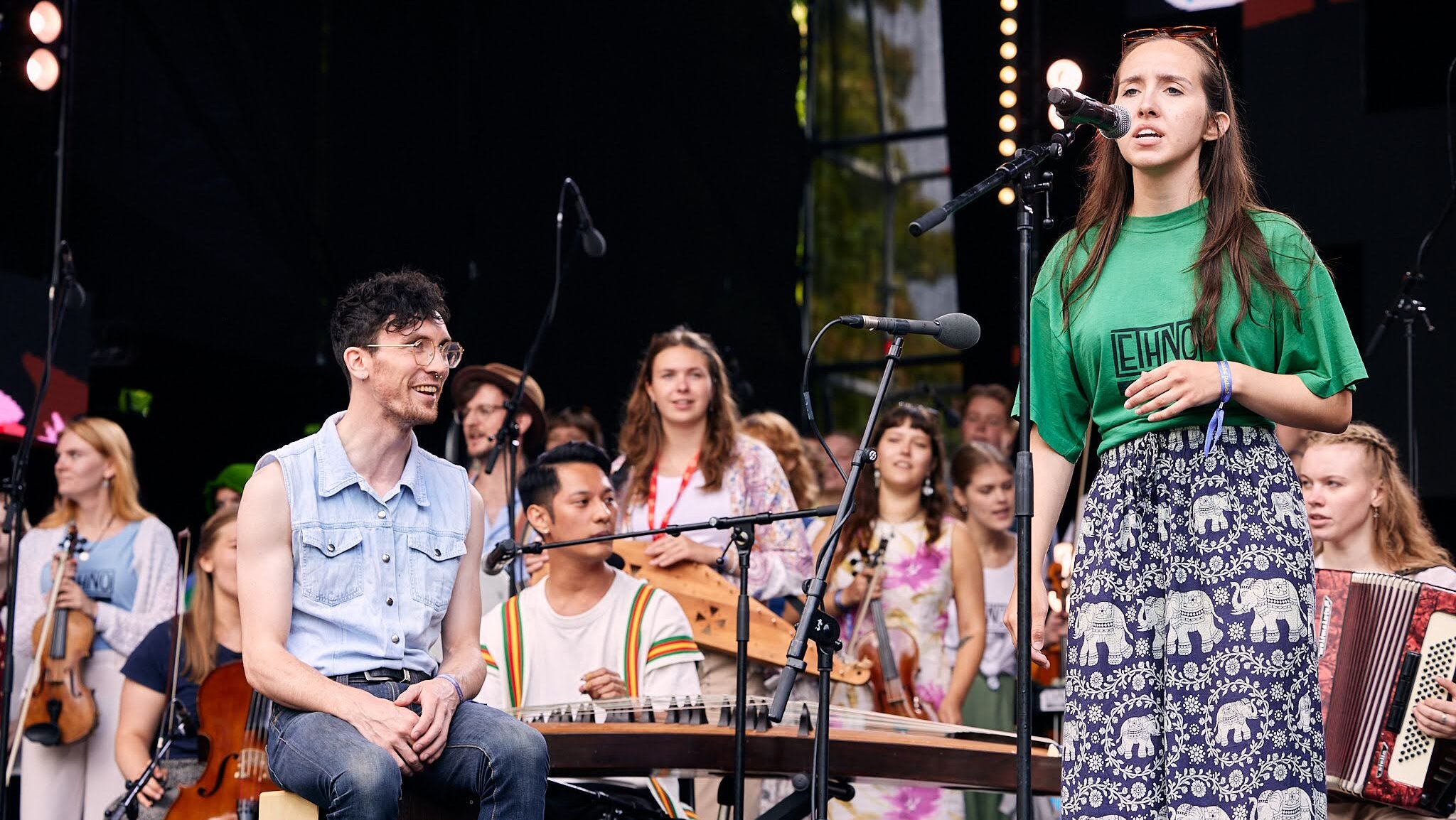Each point of a weaving draft (the visualization of a pattern) corresponds to a point on the grand staff, either on the bass clef or the treble clef. This is then played on a music box of sorts, cranked by hand, producing both chords and singular notes.
For instance, the horizontal streaks of a pattern from Kolozs County (once part of the Kingdom of Hungary) function like a pianist's steady left-handed pattern on the low end of a piano. Meanwhile, a flower pattern becomes a twinkling melody in the higher registers. Afterwards, the pattern reverses, resulting in steady high notes and a more complicated pattern in the lower registers, on the bass clef. Among the Hungarian and Romanian patterns, wider objects become clustered chords. Thinner objects or long lines become scales and tangential melodies.
After this first iteration of the Soundweaving project, Szirmay teamed up with pianist Daniel Vikukel to interpret the rug embroidery of artisans from Afghanistan. The presence of diamonds and triangles in these patterns creates converging and diverging melodies, like two hands meeting at a middle note and then separating again.
It's established that patterns exist in the natural world. For instance, sound waves produce intricate patterns out of grains of sand when they vibrate a Chladni plate at frequencies above 1000 hertz. What would we hear though, if, like in the Soundweaving project, we processed an Estonian pattern through a music box?
Let's examine a belt pattern from Otepää, as pictured in Eevi Astel's book Eesti vööd. On the outside edges of the belt, white space is interspersed with single red dots, double blue dots, and blue rectangles with red lines cutting through horizontally. The pattern is the same on both sides of the belt. In the middle of the belt are tightly woven red X shapes. At regular intervals every few centimetres is a white space in the shape of an eight-pointed star, a common motif in Estonian folk patterns. Each of the white stars has a red diamond in the middle.
If we programmed white space as silence and then cranked the pattern through the music box, the edges of the belt would sound like equivalent chords played several octaves apart, alternating with dyads (two note chords), and single notes played in unison in opposing low and high registers. Playing the X shapes in the middle of the belt would be so wild that it would require another music box to play them with clarity. Or if people were performing the pattern, another musician would need to be hired, playing almost constantly up and down in the middle registers of their instrument except for a rest of a few beats every couple of measures. And it would repeat many times, until the belt pattern came to an end!
Naturally, the sounds would be somewhat repetitive because patterns themselves repeat. The repetition we notice in folk songs, patterns, and beyond is characteristic of an approach that is based on accessibility. Folk culture is meant to be part of one's existing activities, not requiring as much formal education or lots of spare time and space to do—which is not to diminish its value! Rather, everyone is welcome to participate in folk culture. Traditionally, embroidery would happen while sitting around, talking with one's friends and family. Singing would be done while completing farm labour outside. Working with repetition in these acts means you don't have to refer as much to notes or patterns.
Considering the accessibility and long history of folk textile traditions, it's fascinating to think about how they can now be used like an early form of MIDI (Musical Instrument Digital Interface) notes composed on a computer. Likewise, the influence of punch cards used with the Jacquard Loom in the early 1800s can be seen in the IBM cards that were introduced in 1928.
Thinking about art from mathematical and technological standpoints adds another dimension to our understanding of human creativity, as art interacts with more of our senses.
Written by Vincent Teetsov




